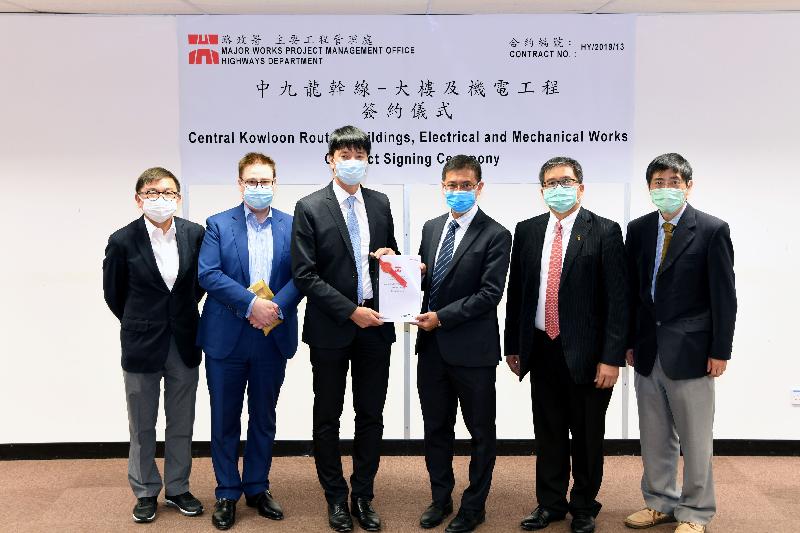The Highways Department (HyD) signed the Central Kowloon Route (CKR) on 10 July 2020. This contract covers works on buildings, electrical and mechanical (E&M) contract with Gammon Construction Limited.
This contract is the first HyD contract adopting the New Engineering Contract (NEC) target cost option with complex civil, structural and E&M works of various systems. The works mainly comprise the construction of one Administration Building and three ventilation buildings located in Yau Ma Tei, Ho Man Tin and Kai Tak for the CKR and provision of the tunnel ventilation system, air purification system, central control and monitoring system, fire services system and traffic control and surveillance system. The forecast total cost is about USD5.67 billion.
One of the critical issues of the contract is the complicated interface arrangement with ongoing contracts. Up to now, a total of seven works contracts including the one signed today have been awarded under the CKR project with a total value of about USD28.9 billion.
The Director of Highways, Mr Jimmy Chan, said at the contract signing ceremony that there are three contracts worth USD13.9 billion adopting the NEC target cost option, which contributes to about 50 per cent of the total contract value of the CKR project. The NEC emphasises mutual trust and co-operation between the contracting parties. This contract adopts the target cost option that provides incentives for the contractor to explore more innovative and cost-effective construction proposals and to resolve interfacing problems in advance with a view to saving costs and assuring completion on schedule.
The CKR will be a 4.7-kilometre dual three-lane strategic trunk road in Central Kowloon linking the Yau Ma Tei Interchange in West Kowloon with the road network of the Kai Tak Development and Kowloon Bay in East Kowloon. It is anticipated that with the commissioning of the CKR, traffic congestion in the road network in Central Kowloon will be relieved and the journey time between Yau Ma Tei and Kowloon Bay during peak hours will be reduced to about five minutes. — Construction+ Online

 Malaysia
Malaysia Singapore
Singapore Indonesia
Indonesia Tiếng Việt
Tiếng Việt ประเทศไทย
ประเทศไทย










